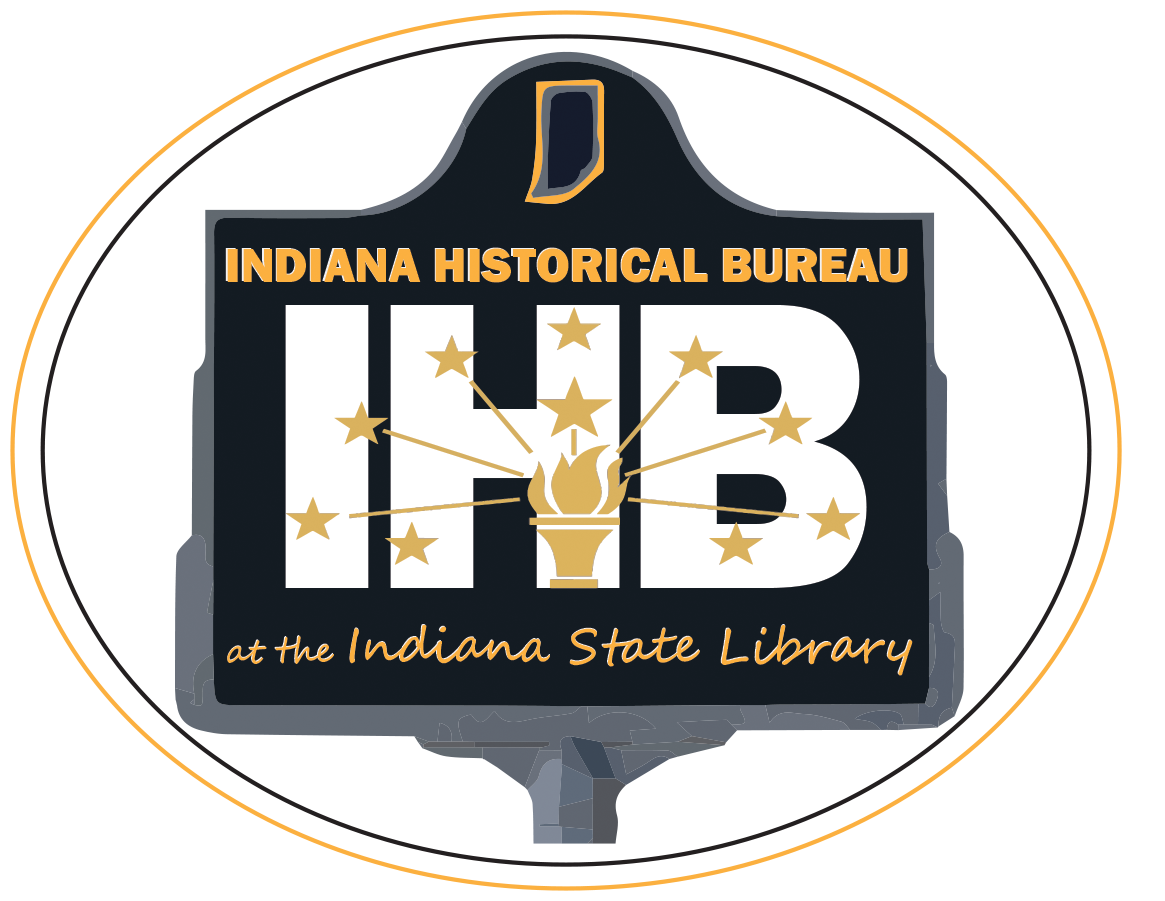Transcript for episode 7 of the 2024/2025 season of Talking Hoosier History.
Embroidered with resorts and mineral springs, French Lick Valley served as a veritable playground for Americans at the turn of the 20th century. Hotels in West Baden and French Lick offered all the creature comforts money could buy. One could luxuriate in mud baths, bird watch from marbled verandas, and be moved to tears at an opera house. When nestled in the hills of southwestern Indiana, daily responsibilities of vacationers were but a fleeting thought. But for some, the Valley was a hotbed of violence and intimidation. In early June 1902, “Friends” penned a letter informing locally-employed Black waiters:
“There is 35 sticks of 45 per cent dynamite in hiding now to blow you up and there is also ammunition at the same place. Every house in West Baden, French Lick, Hillham and in the valley that has colored people in them will be blown up.”
I’m Justin Clark and this is Talking Hoosier History.
According to the letter’s authors, fifty-six locals had gathered in the countryside, plotting to expel the region’s Black population. The conspirators were likely the same individuals who had recently installed a sign in West Baden bearing “the proverbial skull and cross bones” associated with sundown towns—so-named because people of color were driven out by violence if they had not vacated by the evening.
Lin Wagner, director emeritus of the French Lick West Baden Museum, explains:
“’The hotels were building and booming in the late 1800s . . . the south was undergoing reconstruction and a lot of blacks were moving north. West Baden Springs Hotel owner Lee W. Sinclair brought workers up from the south to work as nannies, bellmen, maids, porters and waiters; [all] vital to the day to day operations and success of his West Baden resort.’”
Migration to West Baden was part of a broader movement. Historian Jack S. Blocker noted that the rate of Black migration to Indiana fluctuated between 1860 and 1930, but that the pace quickened in the 1890s. In her Indiana Blacks in the Twentieth Century, Emma Lou Thornbrough stated that Black Hoosiers and migrants from other states had begun relocating from farms to more urban areas towards the end of the 19th century. As the Black community grew in the French Lick Valley, the white laboring class conspired to dispel its workforce. Between 1902 and 1908, local newspapers reported on an emergent “race war.” Just days after the letter was dispatched to Black waiters and the property owners who rented to them, Secret Service officials descended on the area. They warned the conspirators—who had anointed themselves the “Committee of Regulators”—that if they were caught with firearms they would be jailed for inciting a riot. It is unclear if any of the ringleaders actually faced arrest or imprisonment.
Punitive lip service was more likely, as Deputy U.S. Marshall John Ballard reportedly feared arrests would make the situation more volatile. In fact, the Bedford Weekly Mail reported that “several of the most objectionable” Black residents complied with a “quiet” order to leave the area during the conflict.
Referencing the events in West Baden and similar occurrences in towns along the Monon Railroad, Reverend Edward Gilliam wrote to the editor of the Indianapolis News, asking “Where are my people to go? What are we to do?” He argued that these conflicts represented the larger struggle for Black people to support themselves in post-Reconstruction America. Gilliam wrote:
“With factory doors, mercantile opportunities and other avenues of earning a livelihood closed against us,” it was particularly shameful to “be notified that we shall be permitted to choose our fields of labor only upon the approval and consent of a lot of men who defy the laws of the country.”
He begged the question:
“Is it not time for those who favor fair play to all men to speak out and emphatically say that Indiana shall not be disgraced by such unlawful proceedings?”
Here in Indiana and elsewhere, Black Americans were barred from employment and subsequently condemned for their destitution.
Just after midnight on June 5, 1908, sections of the Valley illuminated with gunfire. A few hours later, the sound of explosions plucked dozens of waiters from slumber at the Jersey European Hotel. “Frightened so badly that they could scarcely speak,” they rushed into the street as sticks of dynamite hammered the west side of the building. Many boarders at the Jersey European operated by Black proprietor Charles “Champ” Rice—were employees of the West Baden Springs Hotel. While no one was physically harmed, the blast damaged the structure and succeeded in driving many Black residents from the area.
Journalists speculated about the perpetrators’ motive, but generally concurred that the violence was intended as retribution for the dismissal of white waitresses at the West Baden Springs Hotel, known as the “Eighth Wonder of the World.” Reportedly, hotel manager Lee Sinclair had recently fired about forty waitresses and replaced them with Black men from Louisville. Sinclair justified his decision to replace the female waitstaff as “trying to better moral conditions.” However, an anonymous writer informed the Indianapolis News that Sinclair was induced by the “jealousy of a woman for the waitresses. She has been trying to make this change for the last year.” It is unclear if the woman was part of hotel staff or had a personal relationship with Sinclair. Regardless of its impetus, the resultant hostility caused more Black waiters and residents to flee the area.
On the precipice of what newspapers described as a “race war,” Marshall John Ballard returned to West Baden, seeking to identify those who initiated the attacks. He was generally met with silence, especially from fearful Black residents who had chosen to remain in the Valley. A night watchman also had little to offer, as he reportedly fled in search of law enforcement when the shots began ringing. Tensions were so heightened that newspapers predicted the state militia would be dispatched. Nevertheless, John Felker, owner of a building that housed the displaced individuals, refused to expel them, “even if the alternative is leveling the building to the ground with dynamite.”
Fortunately for Felker and other businessowners, no dynamite sticks were thrown. The violence seemed to disperse as quickly as it emerged, or at least reports of it ceased to appear in newspapers. Perhaps the presence of the Secret Service and federal officials drove the terrorists into hiding and things got “quieter” for a time. Or perhaps the community was not suddenly safe, but residents had laid down roots in The Valley and decided to withstand racism as best they could.
While many Black residents fled, as refugees in their own country, others stayed and nurtured the remaining community. In 1909, Reverend Charles Hunter wrote to the Indianapolis Recorder about the burgeoning Black-owned businesses in the French Lick Valley. He noted that members of the “superior class,” like hotel porter S.C. Pitman and news dealer H.L. Babbage, lived in modern, well-furnished houses. W.O. Martin owned a tailoring business and Mrs. W.L. Alexander and Mrs. W. M. Scott did “fine business” as dress makers. James Gibbs excelled as head waiter at French Lick Springs Hotel. Reverend Hunter concluded his letter to the editor by quipping “my old friend Wiggington plays the ‘devil’ as usual’” in his role as the French Lick Springs Hotel’s mascot, Pluto Water.
Recreation and the humanities kept pace with business endeavors in the Valley’s Black community. Members of the Ladies Culture Club met to discuss topics like how to generate income and global peace efforts. Young residents organized a literary society to explore matters of art and culture. In April 1909, the First Baptist Church was dedicated. Hugh Rice and J.P. Cook presented tithes on behalf of their fellow waiters at the West Baden and French Lick hotels. After church, one could watch the French Lick Plutos play the West Baden Sprudels—who were managed by hotel proprietor Champ Rice.
Rice’s Jersey European Hotel withstood the violent Summer of 1908. In ads printed in The New York Age a few days later, he appealed to those “in bad health,” informing them of the benefits of the Jersey’s spring waters for just $1.00 per day. Indeed, those who hailed from the Big Apple took him up on the offer, as well as residents from cities like Chicago, Pittsburgh, Little Rock, Cleveland, and Chattanooga. Providing the Jersey European with competition, the Waddy Hotel opened in 1913. It served Black patrons like noted Indianapolis journalist Lillian Thomas Fox and, years later, famed boxer Joe Louis.
During the Progressive Era, Black communities and institutions continued to grow in Indiana towns, like French Lick and West Baden, despite an ever-looming threat of another “race war.” In trying to make a livelihood, Black Americans had to contend with displacement, vandalism, violence, and eventually the organized efforts of the Klan. By 1923, fiery crosses stretched across Southern Indiana’s “little valley,” as 100 members were initiated into the hate group. Despite the shadow cast by Jim Crow discrimination, Black Americans continued to answer the questions “Where are my people to go? What are we to do?” through community-building and fellowship.
To learn more about this topic, read “Where Are My People To Go?:” The West Baden “Race War” by IHB historian Nicole Poletika at our blog. We’ll put the link in the show notes.
State historical markers are also a great way to learn about Hoosier history. In 2022, we dedicated a marker commemorating Fox Lake Resort in Angola, which offered Black middle-class families from Indiana and nearby states refuge from Jim Crow discrimination. Visit our website to learn more about the marker.
This episode of Talking Hoosier History is voiced by Justin Clark, written by Nicole Poletika, and produced by A.J. Chrapliwy. A transcript, show notes, and more information on this episode is available at the THH website: https://podcast.history.in.gov/.


